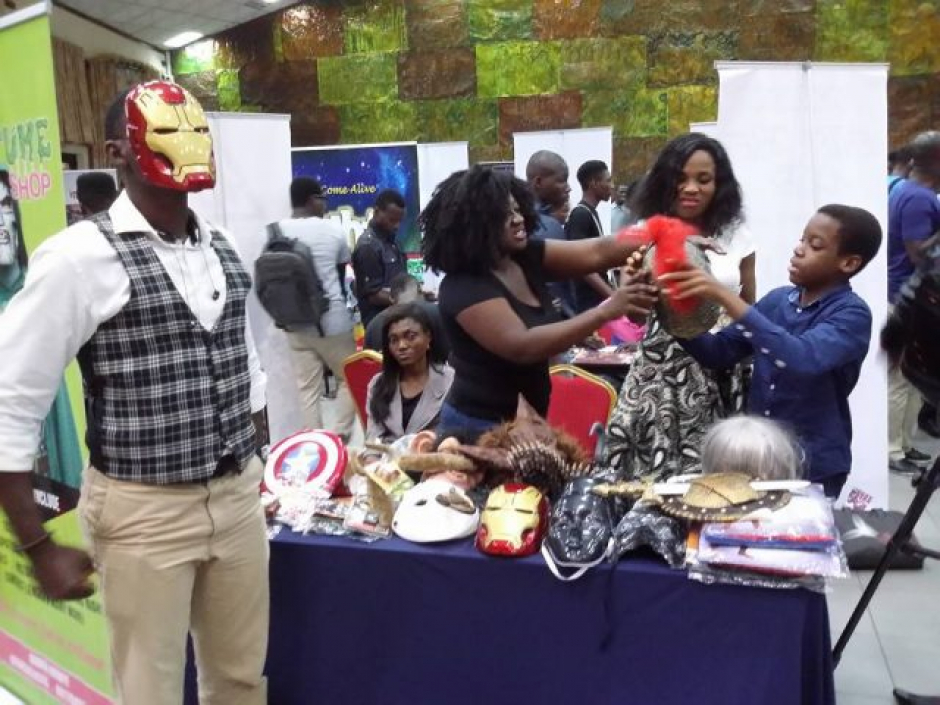• London’s famous statues come to life
• Intelligent primates teach a young woman how to tell stories
• An ancient African technology is rediscovered…
‘Please Feed Motion’ (2011) by Irenosen Okojie (Nigeria/UK)
‘How Nnedi got Her Curved Spine’ (2012) by Nnedi Okorafor (Nigeria/USA)
‘The Writing in the Stars’ (2015) by Jonathan Dotse (Ghana)
‘Mother’s Love’ (2015) by Dayo Ntwari (Nigeria/Rwanda)
The stories in this section show the great importance of workshops, awards and pioneering editors in the development of African SFF.
Irenosen Okojie’s story ‘Please Feed Motion’ first appeared (in a slightly different version) in Jungle Jim, issue 4 in 2011. Jungle Jim is a pioneering print journal from South Africa. The editor Jenna Bass had the odd notion that fiction should be fun so she published adventure stories, horror, crime, even science fiction. Jenna hunted down writers she had seen, sometimes in blogs, and asked them for stories. One of the authors Jenna says she is proudest of publishing is Irenosen.
This unusual story set in London is about the statue of Eros in Piccadilly Circus coming to life – followed by the statue of Charlie Chaplin. So who says African speculative fiction has to be about Africa?
Irenosen’s story helps showcase the perhaps disproportionate role taken by women in African SFF. They are outnumbered in terms of publications by the men, but in terms of respect and profile, the field could be said to be almost dominated by women – Lauren Beukes, Sofia Samatar, of course Nnedi Okorafor. The writer Irenosen most reminds me of, however, is the award-winning Helen Oyeyemi.
Both women are of Nigerian extraction living in the UK. Both write work that is impossible to define, always unexpected, never remotely fitting into any expectation about what African fiction should be. I would describe both of them as being literary writers with a fantastical edge.
No anthology of African SFF could do its job without a story from Nnedi Okorafor, someone who is acknowledged in Africa as being both a major literary figure and a writer of SFF.
This story ‘How Nnedi got her Curved Spine’ exemplifies several things at once.
First, it is a piece of traditional belief speculation that is an origin myth for Nnedi’s own writing career, and as such is a kind of dream image of the rise of African speculative fiction itself. It is a piece of life-writing in fantasy – an unusual form I would like to see more of. It is also an example of the importance of publishing venues in the rise of African speculative fiction, in this case StoryTime.
StoryTime started as a weekly online magazine. In 2010 its first anthology came out in both print and e-book formats as African Roar, which became an annual anthology. Nnedi’s story came out in African Roar 2012. The series was edited by Ivor Hartmann and may have laid the foundation for his AfroSF series of anthologies, the first of which, published in 2013, established beyond any doubt that Africans were indeed writing SFF – a lot of it.
Often, the first thing Western writers want to do to ‘help‘ African writing is set up a writing workshop.
Can I reassure Western writers and editors that many African countries have a bounty of writing workshops? In Malawi, the regular workshops run by Shadreck Chikoti, in Nigeria, the Farafina workshops run by Chimimanda Ngozi Adichie and Binyavanga Wainana as well as those at the Ake Festival, in Uganda Femrite and Writivism and in Kenya, StoryMoja, Kwani and Jalada (and Jalada travels all over Africa)…the list goes on.
The workshops and prizes blur into publishing opportunities. The Farafina Workshop publishes anthologies of related work. The Caine Prize runs a workshop in Africa and that results in an anthology that publishes new invited writers alongside the nominated stories. Short Story Day Africa is both a competition and an anthology. Many writers first see their work in print as the result of a contest or a workshop. The downside is said by Africans (Dilman Dila for one) to be that some people write to win awards rather than for readers.
Jonathan Dotse’s story ‘Writing in the Stars’ was developed at a Caine Prize Workshop and published in that year’s Caine Prize anthology. It intercuts a colourfully realized past with future research efforts to decode an ancient book. Moving back and forth from Africa’s past into the future, combining elements of fantasy with science fiction is something other writers like Wole Talabi and Dilman Dila have also done. The effect is to reclaim the narrative of African history as whole.
Another Dotse story ‘Virus’ is linked to from the page 21 Tomorrow, which links to 21 stories available on blogs or webzines. ‘Virus,’ like ‘Please Feed Motion’ was first published in Jungle Jim – but is now available online from Dotse’s own blog www.afrocyberpunk.com. From 2010 this blog – started when Dotse was 19 years old – played a pivotal role in highlighting and establishing SFF in Africa.
Blogs, as we shall see later, played a key role in providing a place for young Africans to get their work to an audience outside the people who knew them.
Dayo Ntiwari’s ‘Mother’s Love’ was shortlisted for the Short Story Day Africa Prize for 2015. The call for submissions to the competition asked for stories based on the theme of ‘water’.
Cat Hellisen won the overall prize with another fantasy Worme Bridge, available for you to read online for free. Both stories were first published in the resulting SSDA anthology Water.
Ntwari’s vivid fantasy combines far future dystopia with wondrous traditional belief speculation. It also delivers a dream image of patriarchy, how powerful men can leave behind unwanted sons to be raised by impoverished, abandoned mothers. The story is as good a summation as I’ve seen of how patriarchy and poverty march in lock step – while being a tale of gods and politics.

